From Seattle to Florida: Pandemic life dramatically differs depending where you live
TAMPA, Fla. — Less than 48 hours after I arrived here from New York, a close family member tested positive for Covid-19. As I stood in the local Walgreens late on a Sunday night buying as many rapid tests as I could, a man in his 20s bounded in.
“Do you sell pingpong balls?” he asked the clerk who was ringing me up. It sounded like he had a fun night of beer pong in the works. But what stuck in my mind was that he wasn’t wearing a mask.
Clearly I’d left indoor mask and vaccination mandates behind with New York’s frigid temperatures while visiting my family in Florida. Life seemed nearly back to normal here, though “normal” seemed audaciously carefree compared to the far more cautious environment back home in Brooklyn.
As the nation enters the third year of the pandemic, life cranks on for many — but the way it is experienced varies widely depending on where you live. Personal beliefs mingle with state-level restrictions, or lack thereof, to determine how common it is for people to wear masks in public spaces.
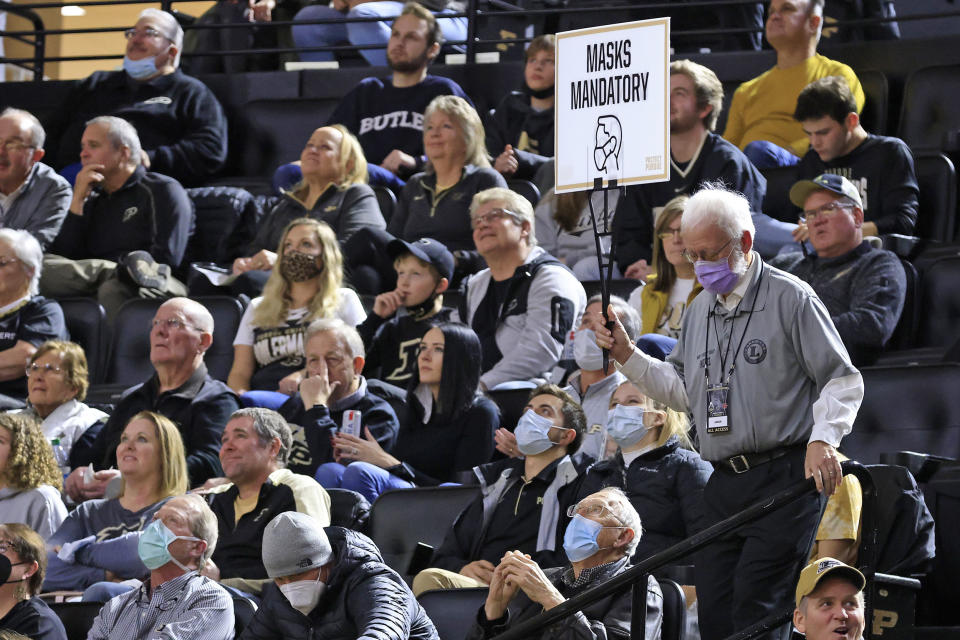
Interviews with more than a half-dozen people around the country showed that many saw striking differences in masking depending on where they lived and traveled. The policies of small-business owners tended to mirror what they saw in their communities, even if they chose to be more cautious in their personal lives.
The change has been gradual in this city of approximately 400,000 on Florida’s Gulf Coast. During the three months I spent here a year ago, most everyone complied with Hillsborough County’s indoor mask mandate. One maskless face at the local Publix was a surprise. A year later, less than half of the people I saw at the Publix, Whole Foods and Target stores were wearing masks.
In May, Gov. Ron DeSantis, a Republican, signed an executive order barring mandates and restrictions throughout Florida. He allowed restaurants to operate at full capacity in Florida starting in September 2020, months before vaccines were widely available and indoor dining was permitted in other parts of the country.
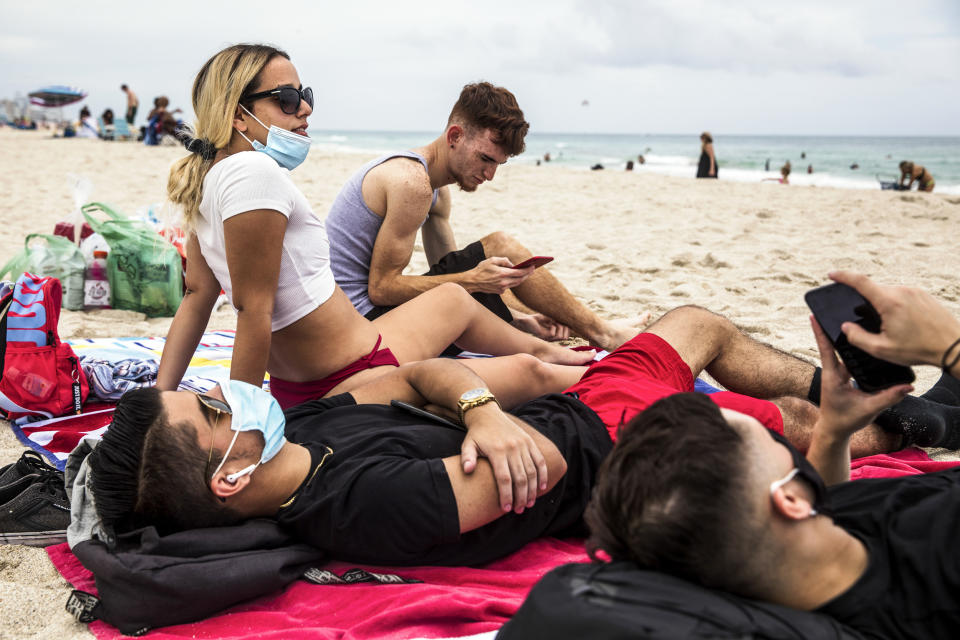
Most servers at restaurants I recently visited around South Tampa weren’t wearing masks, a notable contrast with New York, where even customers have to mask up and present proof of vaccinations and photo IDs to eat indoors.
Liliana Fernandez, 45, a medical scientist who lives in San Francisco and was visiting Tampa, said she was surprised that wearing a mask here seemed to make some around her feel uncomfortable.
“When we’re in the Uber or Lyft [and the driver is] without a mask, I immediately lowered my window and the driver looked at me and wasn’t very happy about it,” she said. “He didn’t say anything or anything, but you can tell he wasn’t very comfortable about it.”
In comparison, she said San Francisco’s mask mandate means that, in her experience, about 95 percent of people there wear masks indoors and about 60 percent wear masks outdoors.
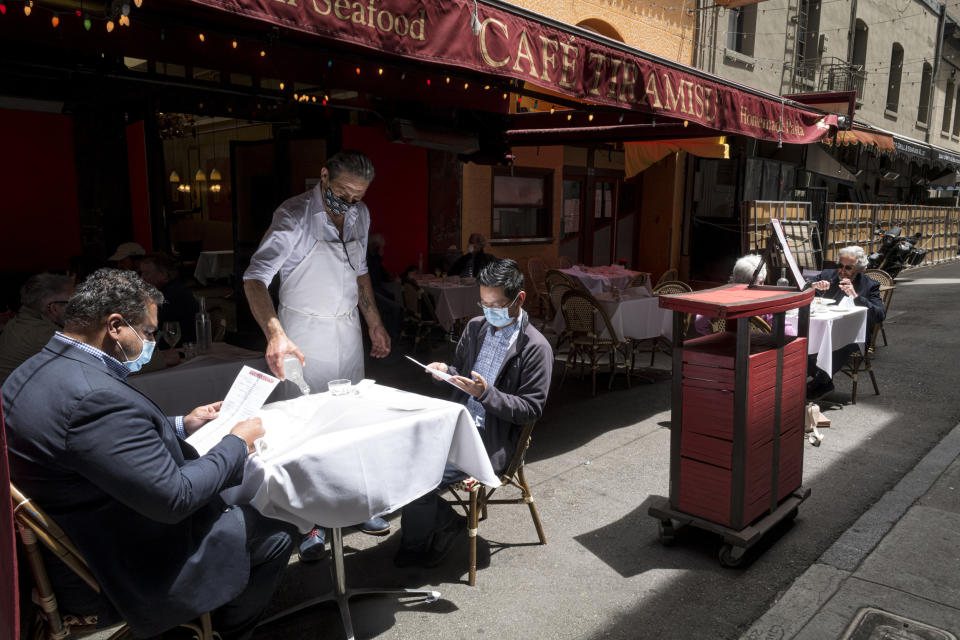
In Seattle, Beth Whitman, 56, the owner of WanderTours, a travel company that organizes women-only trips, said compliance with Washington’s state mask mandate in her city appears extremely high.
“You can’t walk into a store without being masked. You can’t go anywhere without being masked,” she said in a phone interview. “I did my own internal survey of things the other day when I was out on a run, and this is generous, and I’d say about 10 percent of people didn’t have masks on while walking outside.”
Whitman added that she felt some tension over the issue.
“What I’ve discovered is that when you have these rule followers, and everyone is compliant and wearing a mask, is that what comes with that is a lot of judgment and shaming and finger-wagging and negative comments,” she said. “And I’ve had people wag their finger at me when I’ve been out for a run without a mask on.”
In my near-daily walks around South Tampa, where trees are dropping ripe tropical starfruit in yards even as New York sidewalks are getting blasted with snow, almost no one is wearing a mask outdoors. That’s down from a year ago — around when Buccaneers quarterback Tom Brady said he got Covid after a Super Bowl parade here.
Karen Patton, 50, the owner of Peach Out Power Yoga in Marietta, Georgia, said even indoor masking is not common in the suburbs of Atlanta, and wearing a mask carries with it certain perceptions that might not be accurate.
“I did hear someone say to me a couple weeks ago, ‘When I see people wearing a mask, I assume they have Covid or they’re not vaccinated,’” she said. “And I was like, well I wear one because I don’t want to get it.” Patton said she’s been vaccinated and boosted.
Tara Kressler, 48, who lives in the Cincinnati area, shared that experience.
“There just feels like with the signage you read — they put that caveat in there: If you’re not vaccinated, wear a mask. If I’m the only one there wearing a mask, it gives off the perception that I’m not vaccinated,” Kressler said, adding that she is vaccinated and boosted. “I wear it anyway. It’s my way of feeling like I’m protecting others.”
Kressler works as the senior branch manager at the Cincinnati Public Library’s Symmes Township branch, where she said about half of the customers she sees are wearing masks. Signs around the library encourage mask-wearing, and free masks are available.
“Once the mask mandate was lifted for the state of Ohio and we changed our protocol and it was just strongly encouraged, staff weren’t put in a place to be confrontational, and that was a relief,” Kressler said. After vaccines became available, “it was almost a badge of honor [for customers] to come in without a mask because they had both shots.”
As the omicron surge hit, Kressler said the rapid tests provided at the drive-thru window at her library branch flew off the shelves. Her location and others no longer have tests to hand out because the state has shifted to prioritize schools and hospitals, but she said she expects more once the peak has passed.
At-home rapid tests seem readily available in Tampa, where the sales clerk said the limit was four per customer but she could separately ring up any additional that I wanted. What a change from New York, where tests were scarce when I left. A friend in Los Angeles half-jokingly suggested I take home a suitcase full and asked that I send her some while I was at it.
As for masking, in Fort Worth, Texas, it’s also a mixed bag, according to Craig Nicholson, 60, a pharmacist who owns Park Place Pharmacy with his wife. While Texas also doesn’t have mask mandates, he has posted signs requesting that customers in his small shop don them. Most do or are respectful when asked to wear one, he said.
In Tarrant County, he estimated he sees about 40 percent of people wearing masks indoors.
“Sixty percent don’t want to wear masks either because they’re tired or because they don’t want to because of the political environment,” Nicholson said. “I do part-time work in an adjacent county, Parker County, and at one of their bigger grocery stores, it’s 95 percent unmasked.”
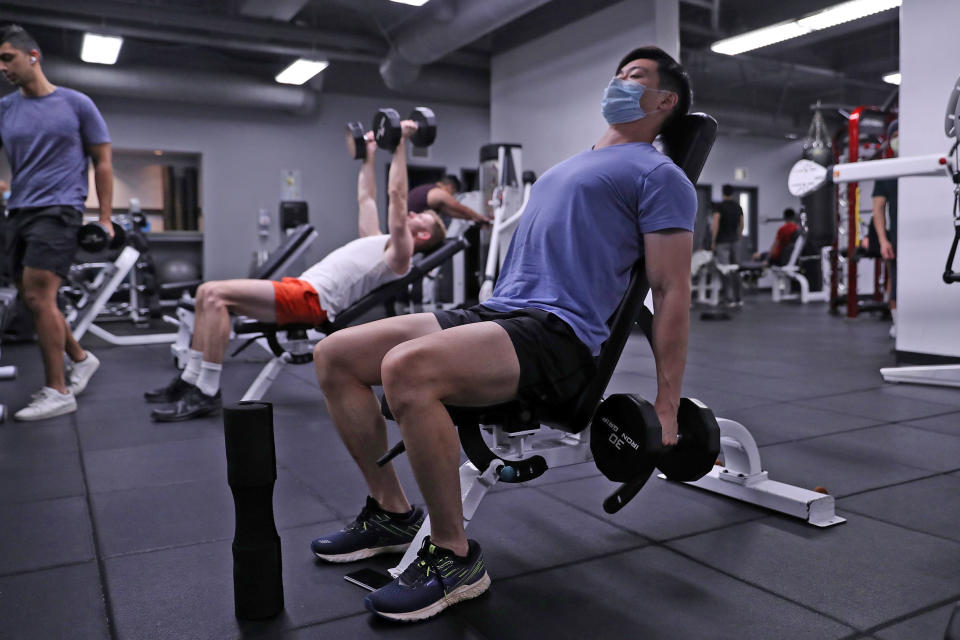
Other small-business owners in states without mask mandates don’t ask customers to wear masks or disclose their vaccination status, even if they tend to wear masks indoors themselves. That’s the case at CrossFit 11:24 in Marietta, a suburb of Atlanta, where owner Callie Cooke, 28, said she doesn’t wear a mask at work but does when she goes to other public indoor spaces.
Her gym closed for about six weeks before reopening in late April 2020. Cooke said the gym now has about 250 members compared to the 200 they had before the shutdown.
“We still have some people who wear masks the whole duration of the workout, and we have others who couldn’t care less, to be honest,” she said.
Patton, who owns the yoga studio in Marietta, also doesn’t require masks or proof of vaccination at her studio, where each class can hold about 30 people in “a pretty crowded room,” she said. Earlier in the pandemic, Patton had started holding yoga classes in the parking lot and, once the weather turned cooler, in a large party tent.
Now, however, business and life in her area appear back to normal entirely, she said.
“At this time, you would not think there is a pandemic,” Patton said. “It’s slammed right now. It’s Dry January, and everyone is working out like crazy.”
Patton thinks much of this relates to the lack of a mask mandate in Georgia, though there are local mandates, such as the one in Atlanta.
“If someone doesn’t dictate it to me, I can’t dictate it to my clients,” she said. “I don’t want to come across as I’m saying people don’t care here. It’s just a different culture. I think a lot of it comes from the top down.”
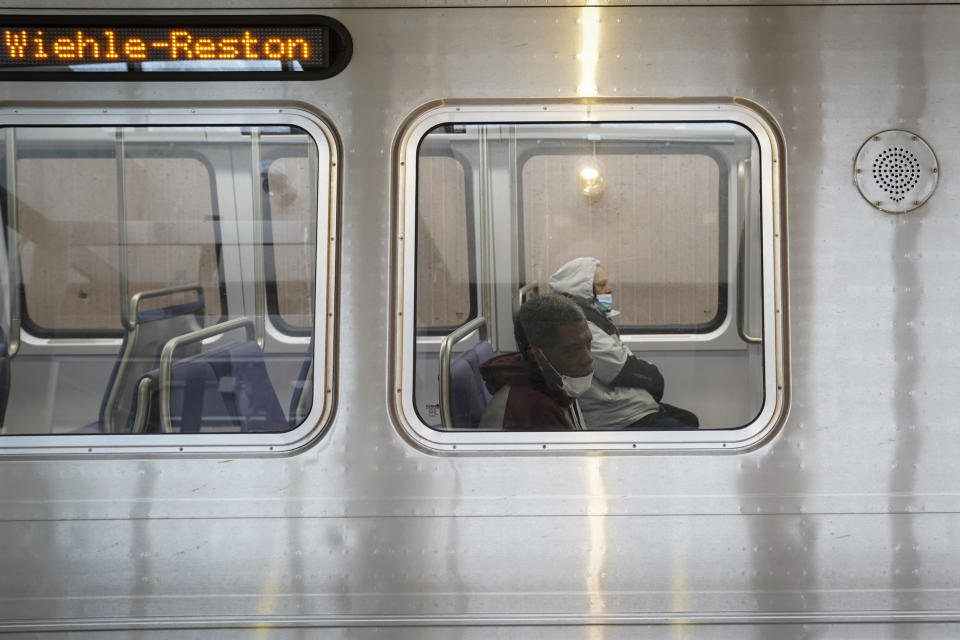
Dan Condon, 50, who lives in Boulder, Colorado, and works for Eagle Rock School and Professional Development Center, a nonprofit philanthropic initiative, said about 95 percent of people he sees in indoor spaces are wearing masks.
That wasn’t the case when he visited family in Milwaukee in December.
“I was checking in to a hotel in Milwaukee, and the front desk agent didn’t have a mask,” Condon said. “I was like ‘Oh yeah, OK.’ It’s a lot of local control. It was a little unsettling.”
The differences city to city, even in the same region, can be significant.
Patty Trump, 68, a retired music teacher, lives in Dallas County, outside of Des Moines, Iowa, where she said about a third to half of people wear masks in shared indoor spaces. But her daughter lives in Minneapolis, where a mask mandate was reinstated in January, and masking is commonplace.
Overall, Trump, who isn’t related to the former president, said she’s observed mask-wearing falling along political lines, with Democratic lawmakers attending Iowa Gov. Kim Reynolds’ condition of the state speech wearing masks and their Republican colleagues not.
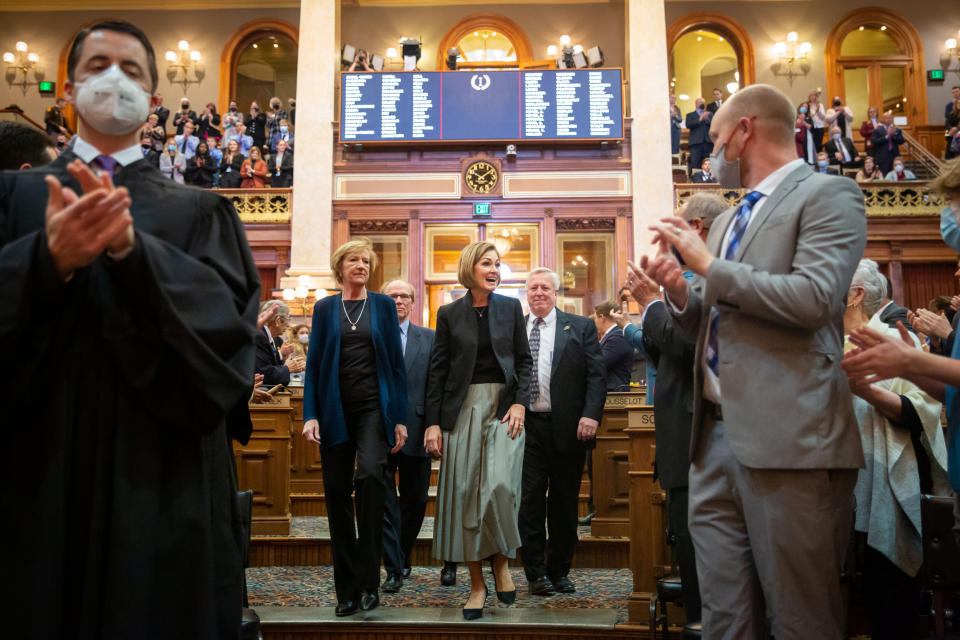
“We’re divided into these stranger tribes,” she said. “I think omicron has made people either think it’s not really a big deal anymore — which, of course, it’s not as much as delta — or it’s just confusing to them, so they’ve just thrown up their hands a little bit.”
Patton shared a similar sentiment about how life seems back to normal in her part of Georgia.
“I think people are frustrated because they have done all the things: They’ve gone out and gotten the vaccine, and they’ve gotten boosted, and they’ve gotten Covid now,” Patton said. “They’ve lost faith in the process. And they think, ‘What else can we do?’ They want to live their lives.”
Meanwhile, in Tampa, less than a week after encountering the man seeking pingpong balls, I overheard a conversation outside my open window: Two neighbors were comparing how they felt when they were sick with Covid. Now seemingly recovered, one offered the other the N95 masks she had at home.
Not all, it would appear, is entirely back to pre-pandemic normal quite yet.
CORRECTION (Feb. 17, 2022, 6:10 p.m. ET): A previous version of a graphic incorrectly included two states among those that had mask mandates for businesses. Colorado and Maryland did not have the mandates.


